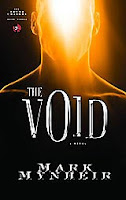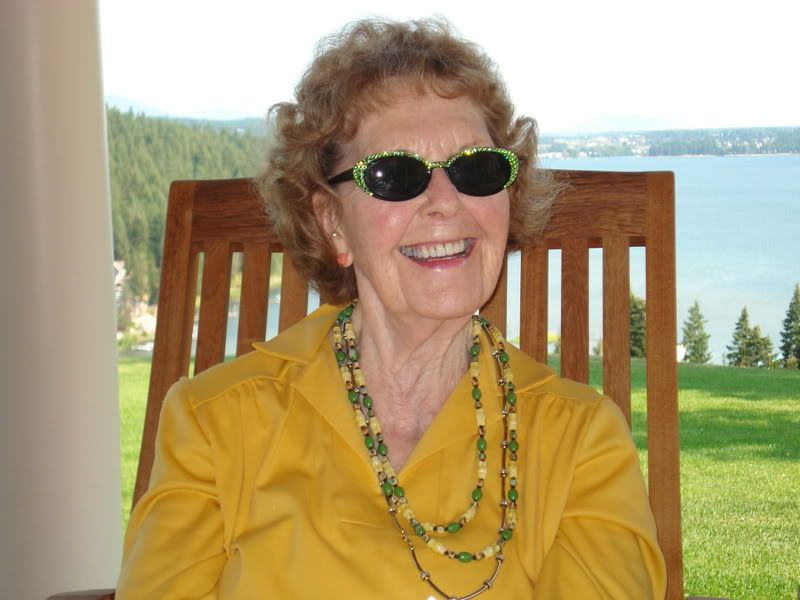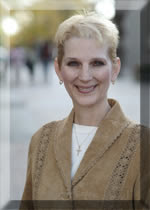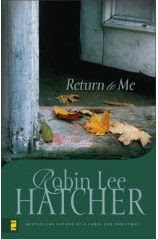Where the BGs (Bloggees) rock!
Join us for discussions on crafting fiction, the writing biz, and the Christian journey.
Plus a story now and then to keep it all interesting.
Friday, August 31, 2007
Violence in Christian Fiction
Last week F&F interviewee Andy Meisenheimer threw a monkey wrench in the works with his comment about seeing too much "unnecessary violence" in Christian fiction. Some of you reacted.
So did I--privately. After all, I'm a suspense writer. I live by violence.
Thing is, Andy's not the first person to make this comment. Others have simply referred to the issue as "too much violence." Every time I hear such a comment, it pulls me up short. First thought: Do any of my books contain too much violence?
Awhile back I wrote a two-part post for Charis spelling out my take on "edginess" in CBA fiction. Basically what's edgy for one reader ain't nothin' to someone else. I think the same applies to the amount of violence. So I know I can't please everybody. Still, I'm always re-examining myself.
To date, I haven't read any Christian novel (and I read a lot of them) that hit me as containing "too much violence." Violence-filled? Yes. Maybe more than even I want to read? Occasionally. But I figure that's merely my taste. Plenty of other readers seemed to enjoy those books just fine.
As with many hot-topic discussions, it's important that we're talking about the same thing. There are really two different issues here. The first "amount of violence" has to do with events. The second refers to graphic details of those events.
On the second page of Dead of Night, the killer, whose POV we are in, cuts off a victim's earlobe in order to take a pierced earring as a souvenir. Violent event? Yes. Graphically detailed? No. Yet the reader has no doubt what's happening. (You can read the scene here.) Dead of Night is an intense story. It also packs a punch about the power of prayer over evil. (I've received many letters from readers about how this book changed their prayer lives.) I don't think its theme about prayer would have been as strong if I'd cut back on the evil that prayer was combating. I figure--hey, if a reader makes it through the prologue, he'll be okay. I let him know what he's getting into right up front.
As I see it, these two different issues--events vs. details--are the reasons for the fallacies in certain arguments against violence. (Or if not fallacies, at least misunderstandings amongst the debaters.) Andy said he'd rather see some mild curse words in our books than read "unnecessary violence." Which kind of violence, events or details? Because comparing the use of actual curse words (although I'm thinking of the more heavyduty kind) to violent events is comparing applies and oranges. I can say a character "cursed" without spelling out the words. The reader will know what's going on. I can supply body language, vocal tone, ice-cold sarcasm, total hard-heartedness, and on and on to help characterize the person and the scene. Using the actual curse words does compare logically to spelling out graphic details of a scene. In Dead of Night if I'd focused on the knife blade cutting through skin, the sound of it, the smell of it, etc.--that would be more than the reader needed to get the point (sorry for the bad pun). That would be the same as using actual curse words.
I'd like to hear your thoughts on the subject.
Wednesday, August 29, 2007
Summer's End and--Egad!
Friday, August 24, 2007
A Great List
 True Light, hitting #1! Not only is it #1 on the fiction list, it's at #1 on the TOP FIFTY LIST of all CBA books, fiction and nonfiction. (The number in parentheses refers to the book's placement on the Top Fifty list.) Only a few novelists have enjoyed the distinction of hitting #1 on the Top Fifty list, as nonfiction tends to outsell fiction within our market. This is a first for Terri.
True Light, hitting #1! Not only is it #1 on the fiction list, it's at #1 on the TOP FIFTY LIST of all CBA books, fiction and nonfiction. (The number in parentheses refers to the book's placement on the Top Fifty list.) Only a few novelists have enjoyed the distinction of hitting #1 on the Top Fifty list, as nonfiction tends to outsell fiction within our market. This is a first for Terri.Waytago, girl!
Second, it's interesting to note that True Light, which is book #3 in Terri's Restoration series, is the first book within that series to hit the top spot on the fiction list. The first two Restoration novels sold well and were close to the top, but not quite there. We hear that subsequent books in a series don't sell as well, and often that's the case. But this indicates the sticking power of novels in this series. As books 1 and 2 have continued to sell, all the more readers apparently lined up to snatch #3 off the shelves as soon as it released. And now this month, Last Light, first book in the series, has come back to the list at #7.
Let's have a yeehaw for all us novelists!
 This week's blog tour: Don't miss The Void, by cop novelist and all around great guy Mark Mynheir. I enjoyed this book. Cool premise--if humans are cloned, what about their souls? Or lack of one ...
This week's blog tour: Don't miss The Void, by cop novelist and all around great guy Mark Mynheir. I enjoyed this book. Cool premise--if humans are cloned, what about their souls? Or lack of one ... Wednesday, August 22, 2007
Andy Meisenheimer--Part II
Welcome back, Andy. As noted in Part I, you'll be attending the ACFW conference. Specifically what kinds of manuscripts will you be looking for?
 Comic vampire legal thrillers. I tell ya, I’ve bugged every legal thriller writer in the CBA to write this for me, and they just don’t bite. There are very few slots left for first-time writers, but I’m building up a list of proposals that, once I become rich and powerful, I can pursue more effectively.
Comic vampire legal thrillers. I tell ya, I’ve bugged every legal thriller writer in the CBA to write this for me, and they just don’t bite. There are very few slots left for first-time writers, but I’m building up a list of proposals that, once I become rich and powerful, I can pursue more effectively. What is your biggest frustration with the Christian fiction industry? What do you hope to do about helping to change this?
I don’t know if this is my biggest frustration (after all, I’m still new and idealistic and naïve) but I’m constantly surprised at how accepting we are of unnecessary violence in Christian fiction. Of the big three, violence, sex, and language, I’m pretty sure we should be least tolerant of violence, in books and in our own lives. In terms of realism, it’s much more realistic to me to have characters let loose with a damn or kickass or my God or a double entendre than have a villain shoot someone in the leg just for fun because he’s the bad guy. Not only is it a double standard, but it’s bad writing. How do I change this? Require my authors to write well. Make sure that everything in the book, from violence to shoestrings, serves the story.
Hm. As a suspense writer I naturally find that an interesting topic. Perhaps we can pursue that further in a later post on the issue. For now--what differences do you think we'll be seeing in Christian fiction in five years?
I think we’re going to see CBA trends mimicking ABA trends. We’ll eventually catch on that there’s not just three genres of fiction: inspirational, suspense, and end times/middle east.
You’ve been an editor with Zondervan for a year now. What have you learned during that time about the industry? About yourself in the industry?
Well, I’ve met a lot of kindred spirits in the industry, and we all seem to think that we’ll somehow change the world. I haven’t lost that feeling yet.
Finally, what would you like to say to the novelists who read Forensics and Faith?
Quickest way to doom yourself: stop reading, stop learning, stop listening.
I may be the #1 editor in my immediate family, but when my wife reads something of mine, I dig in my heels, argue with her, and then make practically every change she suggests (and it makes a big difference). I re-read my favorite books on writing and constantly look for more. And I keep a journal of novels I’ve read so I can track my reading, remember what I’ve read and how I felt about it, and make sure I’m not neglecting genres in which I want to be informed. When I stop doing those things, I should stop editing books.
Thanks so much for visiting with us, Andy.
Thanks for the chance to speak my mind. I reserve the right to change my mind on any opinion on any given topic at any time. Go easy on the next interviewee.
Monday, August 20, 2007
Andy Meisenheimer--Part I
Today I'm pleased to offer Part I of an interview with Andy Meisenheimer, Acquisitions Editor at Zondervan. Andy's going to be at the ACFW conference again this year, which is great because he's a fun guy. And guess what, sci-fi and fantasy authors--he's a major fan.
 So, Andy, tell me--what is the target market for the books you are acquiring? Exactly what kinds of books would they be? How are these books different from what Zondervan has already been acquiring? (That enough opening questions for you?)
So, Andy, tell me--what is the target market for the books you are acquiring? Exactly what kinds of books would they be? How are these books different from what Zondervan has already been acquiring? (That enough opening questions for you?) Well, my target market varies. And the kind of book varies. And how different they are from previous Zondervan books…well, it varies. I acquire fiction and non-fiction titles, in different categories and genres; some targeted to Gen Xers, some not. I might seem like a jack of all trades and master of none, but actually this freedom allows me to play to my strengths—I acquire the books that I think I’ll be able to edit well. I acquire the genres within which I feel comfortable.
How many novels can you acquire each year?
I’ll probably fall around 7-10 novels a year. Non-fiction, maybe 4-6. I’m a stickler for editing my own acquisitions, so we’ll see what my real capacity is.
What are the most common reasons you turn down manuscripts?
Boredom. Honestly. Before I even get to the place where I say the writing is good or bad, I get bored. I’ll give each proposal a second chance by flipping to sample chapters or skimming for something interesting, to ease my conscience. There are writers who can write well but they don’t allow their voice or the tone of the book to inflect the proposal. A book proposal is a story; tell it well.
How ‘different’ is Zondervan allowing you to be in your acquisitions? That is, how is Z balancing the desire for ‘fresh’ material with the realities of selling the ‘tried and true’ in the marketplace?
Well, that remains to be seen, how different I’m allowed to be. In fiction, I’m acquiring based on the idea that arguably the majority of fiction that Christians read is actually from secular publishers. So, looking at ABA trends and genres, I’m hoping to directly compete with the ‘secular’ novels that Christians are reading. And I’m confident that’s going to happen. I’ve got Mike Snyder, who I think is just as enjoyable as Nick Hornby; Rob Stennett, who is the funniest guy I’ve ever read, ever; Noel Hynd, who is a bestselling author writing top-notch espionage thrillers for me; television writer/producer Coleman Luck, whose novels of the fantastic will redefine genres. And so on. Why read the secular alternatives when we’ve got fiction this good?
Zondervan balances me with the ‘tried and true’ by having other editors—those in charge—who acquire tried and true.
Speaking of Mike Snyder, isn't his novel about to release?
It’s still a ways off—March 08. But never too early to plug a book! My Name is Russell Fink will be my first acquisition to see the light of day, and I couldn’t be more proud. Editors are readers, too, and when a book makes you laugh and cry even when you’re adding semicolons and cutting dream sequences, you know you’ve got a winner. And Mike couldn’t have been more fun to work with.
I'm concerned about marketing to Gen Xers. How and where will the novels you acquire be marketed? I don't think many Xers or Nexters shop for fiction in Christian bookstores. Yet in secular stores like B&N, the Christian fiction is stuck in the ‘religious’ section, far from fiction. So how will you attract your target audience to your books?
~ Dark chocolate
~ Axe seems to work extremely well (if you believe the commercials)
~ I’ve coined the term “aloof marketing”: Read this book. Or not. Zondervan.
~ Dropping coupons from a Gospel Blimp.
~ I personally will be dressing up as Larry the Cucumber and hand-selling our novels at local Borders and B&N’s in an attempt to appeal to the Xer’s sense of irony
I’m glad that Christian fiction has its own separate section in Borders—or B&N. (I wonder if I could get Borders and B&N into a corporate sponsorship war to see which one I’ll use as my primary example.) I don’t understand why people want to be lost in the shuffle, competing against the New York big guns. Zondervan’s distinctive is that our books glorify Jesus Christ. Why wouldn’t I want Christians to know exactly where they can find our books? Xers and Nexters just need to be taught that there’s Christian fiction out there for them.
Part II--What Andy will be looking for at ACFW, his biggest frustration with Christian fiction, and more.
Tuesday, August 14, 2007
Checking In ... And Out
Howdy, folks. I'm just back in Idaho after spending four days in Canada. We saw some beautiful country.
My favorite sign along the way: a cafe advertising "Bling Iced Coffee." Don't know what made that coffee sparkle, but those folks sure know the way to a bling girl's heart.
This week I'm on vacation with the family around our Idaho home. I probably will not be posting much this week.
Blessings to all of you. Hope each of you is getting a vacation as well!
Thursday, August 09, 2007
Fiction is "Making its Mark"
Following the large amount of attention paid to novels and their authors during ICRS, the August issue of Christian Retailing ran an article calling fiction the "new chapter in Christian publishing."
One of the firsts this year was Karen Kingsbury's winning of ECPA's Christian Book of the Year Award--the first time a novel has won. The article also mentioned the dessert reception honoring the Left Behind series, which has sold more than 65 million books. The last book in this series has now been written.
Donna Kehoe, who spearheads the Christy Awards, told CR, "It's hard to stay on top of the volution of Christian fiction." The Christy Awards banquet this year had the largest attendance it's ever had.
I have to agree with Donna. Every year I see so many changes. Donna noted the emergence of new genres such as young adult and the "lits." The lits have been around a few years now, but in the past year seems to me the young adult category has really expanded.
In addition, more Christian novels are now expanding into film. The Redemption of Sarah Cain, by Beverly Lewis, has been made into a movie, which premiered at ICRS. (Fox Faith people were quite prominent at ICRS, hosting a booth and making the rounds to talk to various authors.) Ted Dekker's Three and Francine Rivers' The Last Sin Eater have been made into film. The CR article also reports that the Weinstein Company announced plans to enter the faith film market, starting by production of Joyce Meyer's The Penny (co-written with Deborah Bedford), and Max Lucado's The Christmas Candle.
Also at ICRS HarperCollins debuted its new fiction line, Avon Inspire, with a garden patio breakfast honoring its authors, including Tracey Bateman and Linda Windsor. Most publishers had booth signings for their fiction authors, and many held receptions/breakfasts/lunches for their novelists, including Zondervan, Baker, and Waterbrook Multnomah. Still others chose to have their authors sign at the Personality Party (yes, that event) rather than in their booths. These included Nelson, Harvest House, Crossway and Barbour, among others.
In short, as the article reports, fiction made its mark on this year's convention.
Historically, CBA has always been a nonfiction-driven market, with those books outselling fiction. But in the last number of years, that hasn't always been true. Note this month's bestseller list to see something interesting. Out of the 20 books on the list, the first thirteen also appear on the Top Fifty list, which mixes nonfiction and fiction. (The numbers in parentheses for each book shows its placing on the Top Fifty list.) That's a big percentage of bestselling novels to make that major list.
No question about it, Christian fiction continues to expand, not only in content and genre, but in the bottom line--sales. Waytago, novelists and publishers!
-----------------------
 This week's blog tour: And if I Die, by John Aubrey Anderson.
This week's blog tour: And if I Die, by John Aubrey Anderson.
Tuesday, August 07, 2007
A Cobra By the Tail
Here's another true story from the files of Mama Ruth. Year--1953.
-----------------------------
The wind picked up, blowing my hair in every direction. India’s monsoon rains had been over for a week, and at last the ground was drying out. Banyan leaves, much bigger than a man’s hand span, swirled all over the yard. Sometimes they piled up into a pyramid, only to suddenly be lifted and strewn to the four winds. My three-year-old Sandy and I had been walking across the compound, and Sandy was laughing--"The wind is tickling my legs."
"Time for your nap, honey." As I swung her up in my arms and took her in the back door, I heard the preachers singing in the church. Forty delegates to our South India Church Conference had descended on our mission compound. They stayed about four days. My job as hostess was to see that food was available four times every day. I provided three regular meals, plus four o’clock tea. Mother and Dad Seamands (my husband's parents) stayed in our best guest room, and two others in our other corner room. The rest sorted themselves out in the boys’ and girls’ hostels and slept on their bedding rolls. They didn’t mind, they’d all been raised in villages and always slept on the floor.
Conference committees convened in our Belgaum church, which sat left of our house, about half a block across the compound. The path from house to church was shaded by a large grove of banyan trees. Their limbs grow out and down, tendrils at the end of each branch burying themselves to become another tree. In between the roots of these trees, snakes claim their dwelling place.
While I was putting Sandy to bed, I heard Dad Seamands humming as he came in the front door. He called to me, "I forgot my notebook. We’re having a great meeting."
"Mommie, I’ll sleep a lot better if you tell me a little story first." Sandy’s bright blue eyes twinkled up at me."
"OK, just a short one. I need a nap, too. Once upon a time there was a little girl who loved to swing on the banyan branches..."
Later I heard what happened. Dad Seamands--"Tata" (honored grandfather)--picked up the notebook from his room and headed back down the front steps toward the church. About a quarter of the way back he glanced down--and right in front of him a full-grown, five-foot cobra was disappearing into its hideout between some banyan roots. Tata knew he should kill it, but he had no weapon.
Cobras move fast and so did Tata. Without considering the danger, he swooped down and caught hold of the cobra’s tail before it disappeared into its hole. He had a firm grip on the big snake. It couldn’t crawl backward to get
 its head out of the hole. Neither would that giant on its tail let go.
its head out of the hole. Neither would that giant on its tail let go. So it writhed.
There stood Tata, all alone in the yard with a cobra by the tail. Almost forty of his colleagues, intent on business now, carried on their meeting a few yards away.
Tata began to shout, "HAAAWOOO, HAAAWOO, HAAAWOO! SNAKE, SNAKE, SNAKE!!" At first his preachers didn’t hear his shouts; they were too intent on business. Dad began to tire, wrestling that powerful snake. Finally, "HAAAWOO" floated into the open windows of the church.
Instantaneous action! Churches always empty when a cobra visits. Tall Indians, short Indians, stout and thin Indians poured forth pell-mell, nearly falling over each other. They became boys again, racing up the small hill to kill a snake, just like they used to do in their villages.
In shock, they suddenly stopped to laugh. They couldn’t help it. Their Patriarch, in such a pickle! "Oh, TATA! You got the devil by the tail!"
I heard the commotion and ran to the front porch in time to see the show. The preachers raced to the wood pile (I cooked on a wood stove so had plenty) and each grabbed up the biggest stick he could find. They surrounded their hero. While I shivered, Tata began to very slowly pull the big cobra backward out of the hole. The brave stick infantry beat it almost to death before its hood came out. A snake is seldom dead until its head is crushed, so they kept on beating. Crush it, they did, though its body kept jerking in its death throes. They all stood and watched until it was still.
One less cobra to bite somebody on our compound.
They dragged it to a fence row where a marine squad of crows would finish the mopping up detail. Dad massaged his sore hand, and the forty devil fighters straggled down to the church.
I flopped on my bed thinking about the truth of what I'd just seen. Cancel your committees, dump your deliberations. Fighting the devil is what church councils ought to be about.
Monday, August 06, 2007
Beauty Queen

Isn't this a snazzy pic of Mama Ruth? Just taken at our writers retreat. She's wearing my green bling glasses. Kinda pathetic when your 90-year-old mother looks better in 'em than you do.
Tune in tomorrow to hear another of Mama Ruth's true tales.
Or should I say--tails?
Tell me--what would you do if you caught a cobra by its back end?
Friday, August 03, 2007
Return to Me

I'm delighted to tell you about my pal Robin Lee Hatcher's latest novel, Return to Me. Published by only the best--Zondervan, of course. And the cover's fabulous.
A few days ago after everyone went home from the writers' retreat, I went to my bookshelf to pull Return to Me out and read it. (I picked up a copy at ICRS.) Only to realize I must have left the book in California. Drat.
Oh, well--although I can't tell you about this book personally, I can let you know what it's about:
 Discouraged and destitute, her dreams shattered, Roxy Burke is going home. But what lies beyond the front door?Rejection...or a bright future?
Discouraged and destitute, her dreams shattered, Roxy Burke is going home. But what lies beyond the front door?Rejection...or a bright future?
Wednesday, August 01, 2007
Writers Retreat--Part II
Yesterday in the comments someone asked how our writers retreat group was put together, and how I decided who to invite. I can take little credit for the formation of this wonderful group. I'm convinced God put us together.
It all started with my inviting one author friend to visit our home in Idaho. Then it sort of ... expanded. "Well, why not also invite another writer friend who's local." Then--"why not invite this third person. And the fourth..." Then--"Well, if we're having all these writers together, how about if we hold some plotting sessions."
By the time it was all done, about half the group was people close to the northern Idaho area, and the other half from nearby states--Oregon, Montana, Colorado, plus southern Idaho. We had nine novelists, plus two more who joined us--my assistant, who lives nearby, and my mom. Yup, Mama Ruth was not to be left out of such an interesting group, she declared. Now she's mama to all of us.
We decided to hold the group to our 11 people. Sometimes it's hard to say--we have a closed group, and we can't invite anyone new. But we agree that's the only way to keep the group viable. More people would mean cramming more people around the table. It would also mean more plotting sessions--and we can't do any more than nine per retreat. Additionally, when the group becomes more like a year-round church care group, sharing challenges and praying for one another, you don't want to bring someone new into that mix after five years without everyone agreeing that should be the case.
If you're thinking about starting your own group, here are some logistics that we've learned along the way.
1. Food. Keep the menus simple and divide the tasks. Those of our group who drive in bring a meal, either a lunch or dinner. We have sandwiches and salad for lunch, simple things like hamburgers, spaghetti, ham, taco soup, etc. for dinner. Everyone gets her own breakfast--I just provide all the fixin's.
2. Paper plates! After the first year we went totally paper--utensils too, and plastic hot and cold cups. No one should have to be in the kitchen, cleaning dishes three times a day.
3. Expenses. We keep track of food purchases, with the total being divided up. This year each member paid $40. Not bad for 4 1/2 days of constant eating. (Believe me--we don't starve.)
4. Plotting sessions. As mentioned, nine is our max. That's three a day. Don't overextend yourselves here. It depends on the length of your retreat. But if you go three days, you'll find that by the last day, the brains can get tired. Leave yourselves plenty of time for just hanging out and having a good time.
5. Plotting sessions point 2. We don't have any pre-retreat preparation for each others' sessions. We just don't have time to read a bunch of proposals and pages ahead of time. Each presenter only needs to prepare for her own session. She may have a handout of a proposal, or she may be prepared to take 10 minutes or so to concisely tell the others about the story/characters.
6. Beds. With all five bedrooms here full, I still have six more people to house. I bought the AeroBed blow-up mattresses. We line 'em up down in the huge finished basement--we call it The Dorm.
Our retreat is probably on the larger side, as retreats go. There are a lot of logistics for the hostess in preparing to house and feed that many people for four days. You can certainly plan a smaller retreat. But of course, the more writers, the more minds around that table in the plotting sessions. It's because of our large group that we can get so much done in 60-75 minutes.
Anybody else a part of retreat like this? I'd be interested in hearing how others are set up.